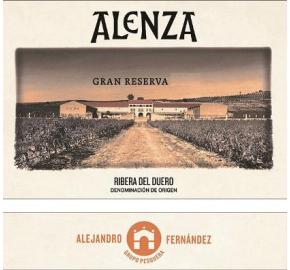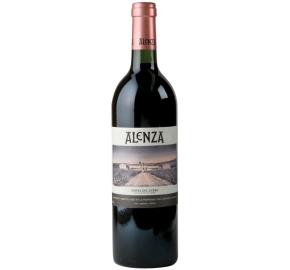This product is no longer available. Please choose another vintage above.
Grupo Pesquera - Condado De Haza Alenza Gran Reserva 2009
- Producer Tinto Pesquera
- Blend 100% Tempranillo
- Country Spain
- Region Castilla Y Leon
- Appellation Ribera del Duero
- UPC 877397005013
Description
The Fernández family has been passionate about winemaking for over four decades, during which they have created four iconic wineries that comprise patriarch Alejandro Fernández’s wine legacy:
Tinto Pesquera, Condado de Haza, Dehesa La Granja and El Vínculo. One of Spain’s first château-style wineries, with all of its vineyards surrounding the winery, Condado de Haza focuses on sustainable farming practices with a special emphasis
on preserving the regional biodiversity. Made only in the very best vintages, the Alenza Gran Reserva is a tribute to Alejandro’s wife, and its name is a fusion of theirs: Alejandro and Esperanza. The 2006 vintage is medium-bodied, wellbalanced and smooth, with exemplary purity and poise. Dark cherry notes are accented by hints of vanilla, sweet spice,
cigar box and dark chocolate. 100% estate-owned Tempranillo
Estate
Planted in 1987, the 200 estate-owned acres of Tempranillo grown by Alejandro Fernández at
Condado de Haza are located literally a stones-throw away from the Duero River. With a different soil type and higher
elevation than its sister property in Pesquera de Duero, Condado de Haza is located in the province of Burgos, which is
known for its rocky soils and cooler climate. Planted north-south in order to maximize sun exposure, production is
limited to 3 kilos per vine. As respecting the Duero’s native biodiversity is of paramount importance to the Fernández
family, chemicals are never used in the vineyards and all water is recycled using an on-site purifier
History
The 1970’s brought the realization of a lifetime dream for a young and determined Alejandro
Fernández. Propelled by his conviction that wines of superb quality could once again be made in the place of his birth, he
went against the movement of the time, when cereal and beetroot dominated the Riberan hillsides, and planted
Tempranillo vineyards in his hometown of Pesquera. In 1982, this iconic winemaking pioneer, who came to be
recognized as the “Master of Tempranillo,” was the keystone in forming the now-famous D.O. Ribera del Duero, a
designation that Alejandro helped to create with only a few other winemaking pioneers.
Vinification
Lying in the coldest region of the four Fernández estates, Condado
de Haza is the last winery of the Grupo Pesquera to begin harvest. Only the very best manually-harvested clusters are
used for making the Alenza Gran Reserva, which are fermented whole-cluster in small, open-top stainless steel tanks.
The grapes, juice and wine are moved 100% by gravity and the finished wine is aged for 30 months in fine grain, 225-
and 300-liter neutral American oak barrels with a light-to-medium toast. Barrels are racked four times during the first
twelve months and an additional 2-3 times per year during the second and third year of barrel aging. With the Fernández
family dedicated to natural winemaking, all wines produced by Alejandro Fernández are neither filtered nor fined before
bottling. Upon completion of barrel aging, the Alenza Gran Reserva is then aged for a minimum of 30 months in bottle
before it is released to the market. Wine analysis: 5.2 g/l (0.52%) total acidity; 14.5% alcohol by volume
Vintage
Characterized as a challenging vintage due to its extended ripening season, 2006 in Ribera del Duero
began with a winter that was more representative of central Europe than its typically dry homeland of Castilla y León.
The beginning of the year was cold and rainy, giving way to a showery spring that lasted until the end of April, when a
blast of heat hit Ribera del Duero. The rain resumed in June, after one of the driest Mays on record. Temperature spikes
in July were relieved by classic mid-summer Castillian storms and August was cooler than usual, with additional rainfall
mid-month. While September began with ideal harvest conditions, early rain required careful vineyard management
during harvest time. The resulting grapes were marked by good development in the face of adversity, and maintained
key organoleptic components in their skins, making the wines perfect for long-bottle aging.


